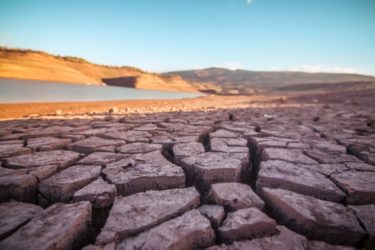 Photo courtesy of World Meterological Organization on Flickr, CC BY-NC-ND 2.0
Photo courtesy of World Meterological Organization on Flickr, CC BY-NC-ND 2.0
The Alarming Future of Global Water Resources
Earlier this week, the World Resources Institute’s (WRI) Aqueduct project released new data with dire news: 17 countries, home to a quarter of the global population, face extremely high water stress – which occurs when more than 80% of the available groundwater supply is withdrawn in a given year. Taps have begun to run dry in Chennai, Cape Town, Rome, São Paulo, and other major cities, raising the question of where future generations will get their water. As more countries face extreme water stress due to overuse and climate change, water will increasingly play a role in global security risks.
How We Got Here
Countries require water resources for agriculture, factories, and human use. Globally, the average water footprint is 1,385 cubic meters per year. In the U.S., the average water footprint per year is 2,842 cubic meters.
Many large cities rely on groundwater for their water supply, but have been draining aquifers for years – leaving very little left for growing populations. Water withdrawals from aquifers have more than doubled since the 1960s due to growing demand. Overpumping aquifers leaves a narrow gap between supply and demand, leaving countries vulnerable to fluctuations in rainfall and changes in demand.
Mexico City has pumped so much water from aquifers that parts of the city are subsiding at a rate of 9 inches per year. In India and Pakistan, farmers use aquifers to grow water-intensive crops such as cotton and rice, despite repeated heatwaves and water insecurity. In California, water is withdrawn from aquifers and irrigated from the Colorado river to grow water-intensive crops such as almonds, pistachios, and wine grapes.
Additionally, climate change heightens the risk of water stress. Mid-latitudes are expected to receive less rainfall under most climate scenarios, and rainfall will likely become more erratic. Increasing temperatures will also lead to greater evaporation, reducing the moisture content of soils and increasing evaporation from reservoirs.
Water-Related Security Risks
Water stress can exacerbate conflict and migration, particularly in countries highly dependent on subsistence agriculture. In Central America’s Northern Triangle, drought and crop failures are leading some rural migrants to head northward to the United States. A recent heatwave in India led to thousands of villagers fleeing their homes, placing stress on surrounding communities.
Conflict can also break out when water stress becomes so severe that people fight over inadequate resources. During a recent heatwave in India, six people were stabbed by a man filling barrels of water from a tanker, leading to police deployments in the area. In Syria, excessive withdrawal of water, years of drought, and poor agricultural policies contributed to the civil war that began in 2011.
Water has also been used as a weapon in conflict settings. In the Yemen conflict, there were attacks on water, agriculture, and health infrastructure. The purposeful targeting of Yemen’s water and sanitation infrastructure in 2018 led to one of the worst health epidemics the country had ever experienced, leaving 19.3 million Yemenis without access to clean water.
According to WRI, the greatest water stress is in the Middle East and North Africa – 12 of the 17 most water-stressed countries are in the region. Another area of concern is India – while it is the 13th most water stressed country, it also has more than three times the population of the other 17 extremely stressed countries combined. Data for India indicates that there is both surface and groundwater stress.
How to Avoid Running Out of Water
World Resources Institute concluded that 255 million people face extremely high water stress, and that number could rise to nearly 470 million by 2030.
“The picture is alarming in many places around the globe, but it’s very important to note that water stress is not destiny,” said Betsy Otto, director of the global water program at the World Resources Institute. “What we can’t afford to do any longer is pretend that the situation will resolve itself.”
Immediate action needs to be taken to reduce water stress, including the following:
- Conserving water through government policies and information campaigns
- Increasing agricultural efficiency
- Investing in grey and green infrastructure
- Treating, reusing, and recycling wastewater
A number of countries have already implemented programs to reduce water stress. Saudi Arabia recently launched a program to conserve water, aiming to reduce daily per capita consumption 43% within the next decade. Oman treats and reuses 78% of its wastewater, while Namibia has been treating its wastewater since the 1960s. Washington, D.C. sells energy- and nutrient-rich byproducts of wastewater treatment.
The question, then, is whether the successes of these programs can be scaled quickly to avoid future water crises. With an additional 215 million facing extremely high water stress by 2030, global action is needed to avoid severe water stress and the global security risks that come along with it.





